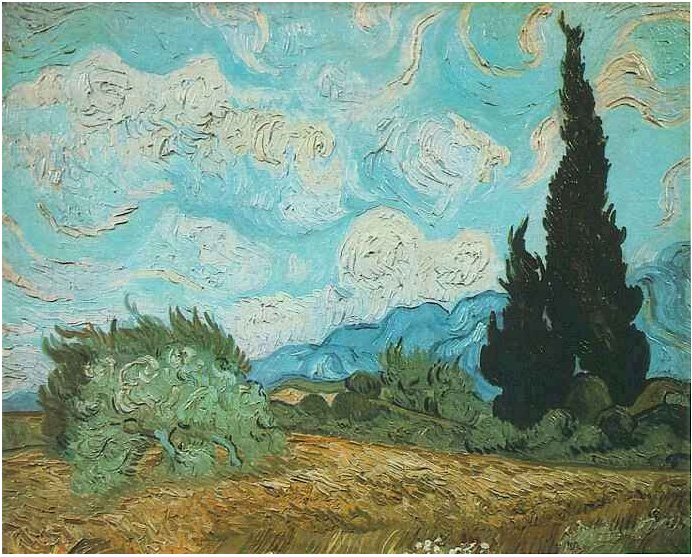Impasto is a painting term that refers to the use of thickly textured, undiluted, paint that appears almost three-dimensional on the canvas. When an artist uses the impasto technique they usually leave visible brush strokes on the finished painting. They apply the undiluted color to the canvas, frequently with a palette knife, and mix colors on the canvas to attain the desired color. When the painting is viewed from the side the paint is seen sticking out from the canvas in globs.
The appearance of an impasto painting is greatly impacted by the lighting in the room. Due to the raised surface on the canvas, light is reflected and shadows are created based on the natural light in the space. Expressionists used the impasto technique for its expressive traits and to draw attention to a certain aspect of the work.
Van Gogh is said to be a pioneer in using the impasto technique. Van Gogh used impasto not just to add dimension to his paintings but to add emotion and movement. We see this movement in the swirling clouds of Wheat Field with Cypresses and Starry Night. The same colors and images could have been created with a traditional painting technique but the movement and emotion of the painting would be missing.
In numerous letters, Van Gogh mentions his use of impasto. In a letter to his brother, Theo, on September 2, 1882 Van Gogh wrote:
“Sometimes the subject calls for less paint, sometimes the material, the nature of the subjects themselves demands impasto.”
Letter Source:
http://www.webexhibits.org/vangogh/letter/11/228.htm
 |
 |

I admire Van Gogh so much. I’m doing my version of “Starry night” for a project!
Im a cat meow
cccccccccccccooooooooooooooooooooolllllllllllllllllllllll